Give the majore product, when the following compounds are treated with sodium methoxide.
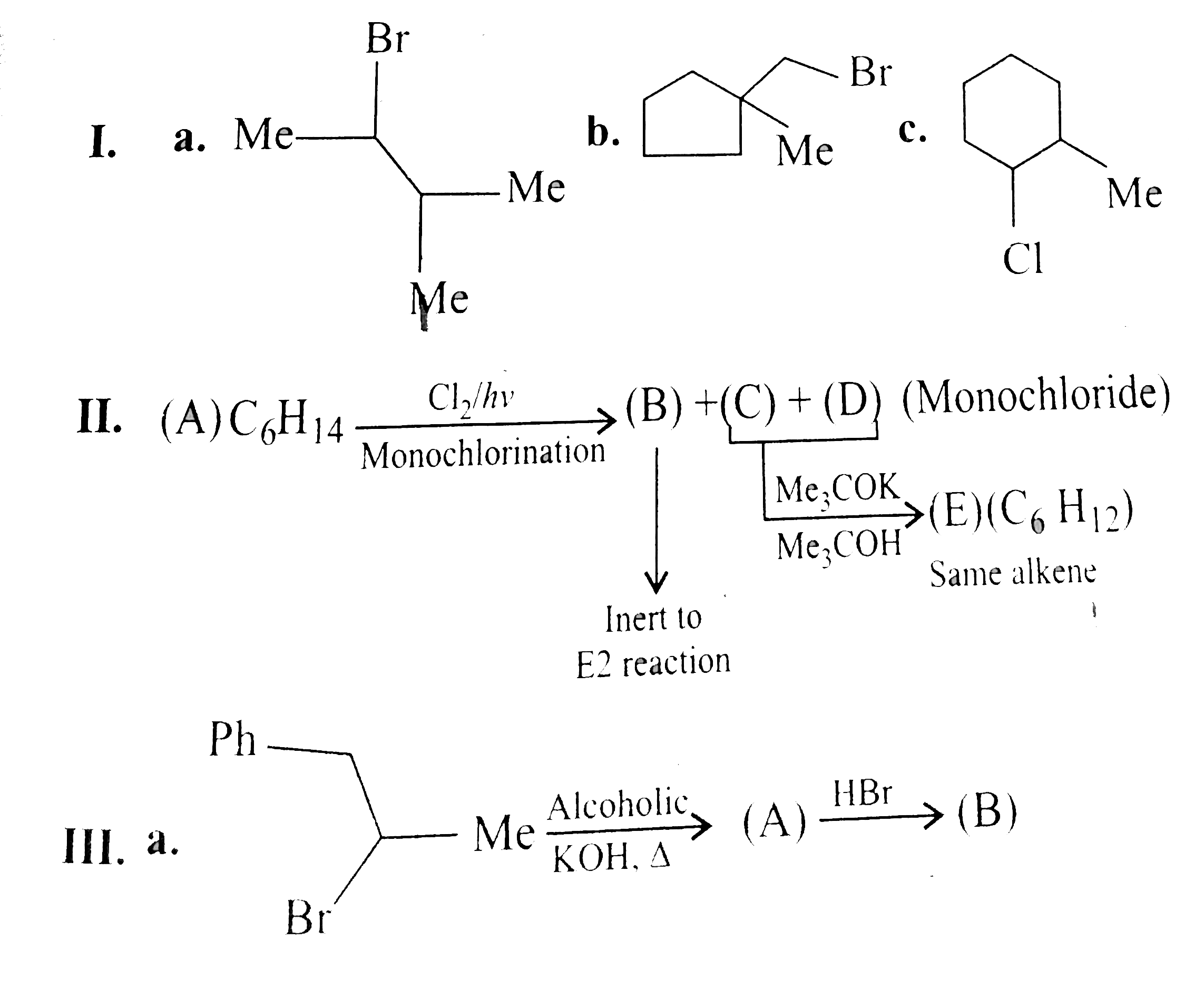

Equaction (I) shows no effect with the addition of Brᶱ to the reaction but Eq. (2) shows the common ion effect of Brᶱ if supplied from external source. Why?
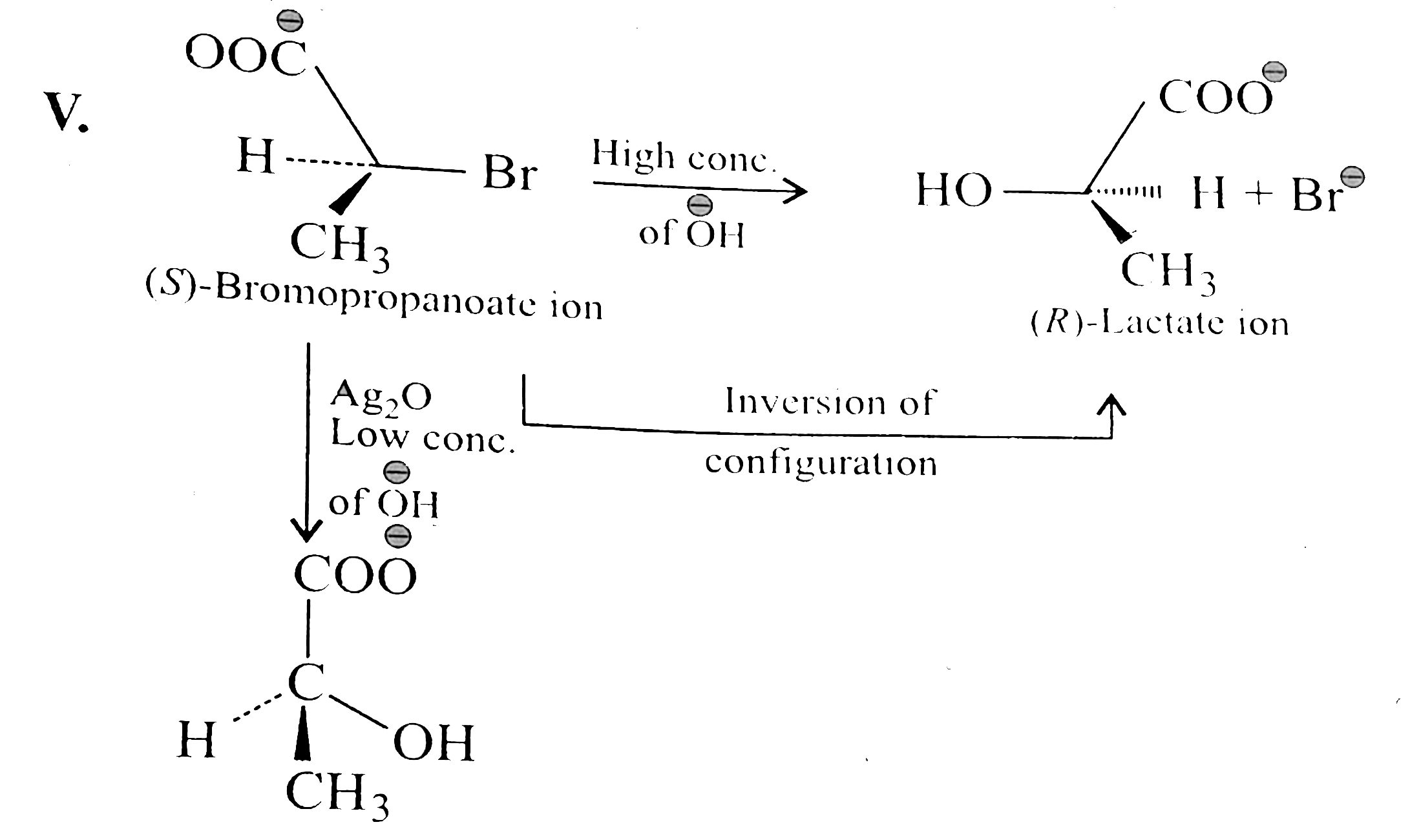
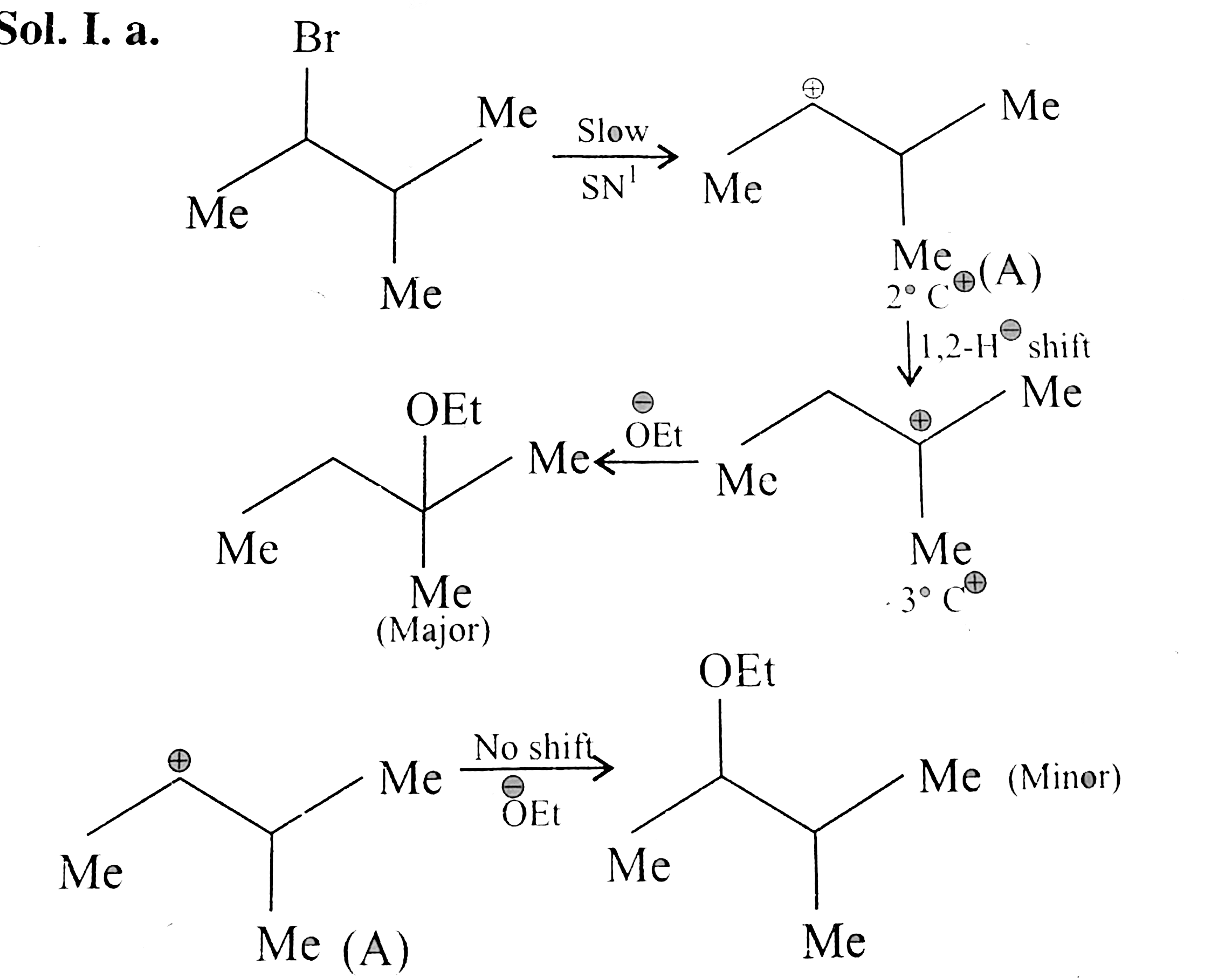
There can can be elimination from 2o− and 3∘C⊕ to give alkene, and alkene predominates over subsituations in 3∘C⊕
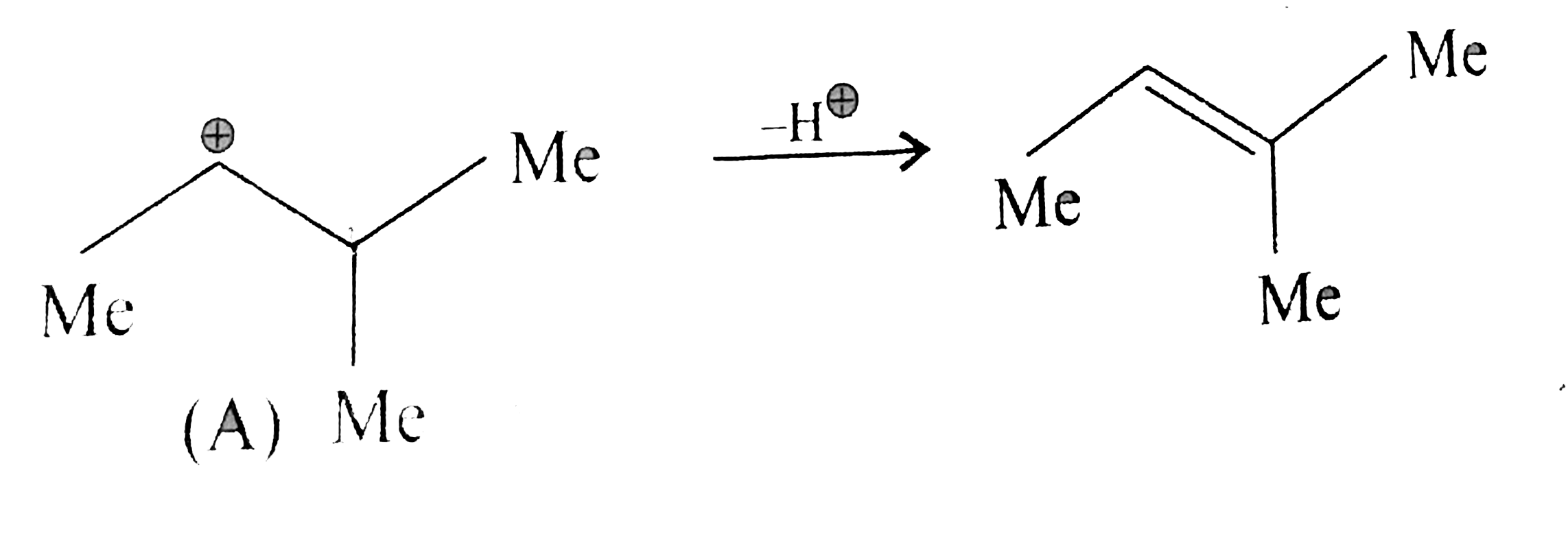
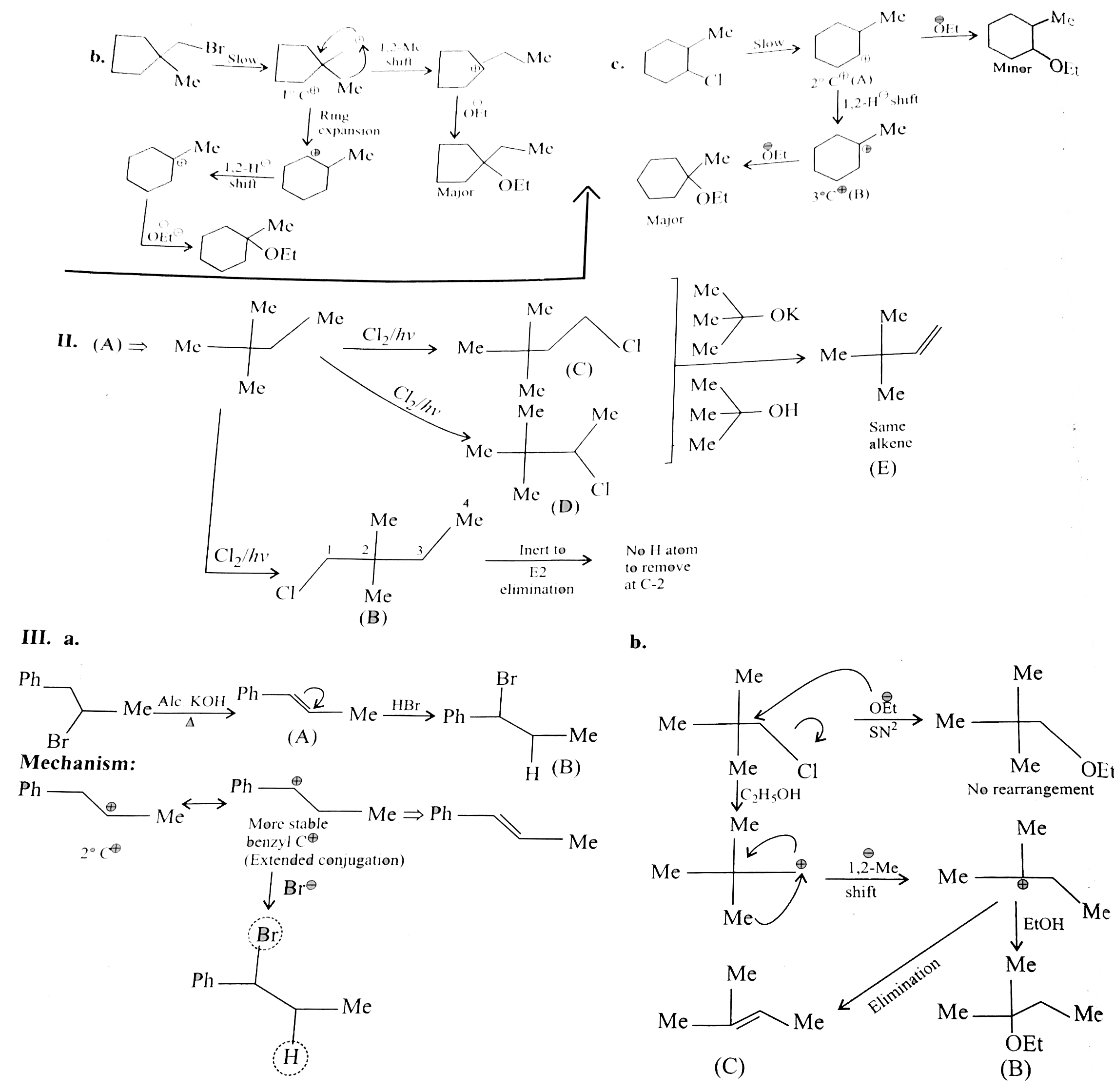
Iv. In (i) Me3C⊕ is formed an in (II), Ph3C⊕ is more stable than Me3C⊕ so relative reaction takes place in (II),

Since reaction (II) is reversible and it shows common ion effect and equilibrium is shifted to left, so both the products (Ph3C−OH+Ph3C−Br) are formed.
But reaction (I) is not in equilibrium so common ion effect does not take place, only Me3C−OH is formed
v. (s)− Bromo propanote ion SN2−−−−−−−−−−→High conc.ofoOH(R)− Lactate ion
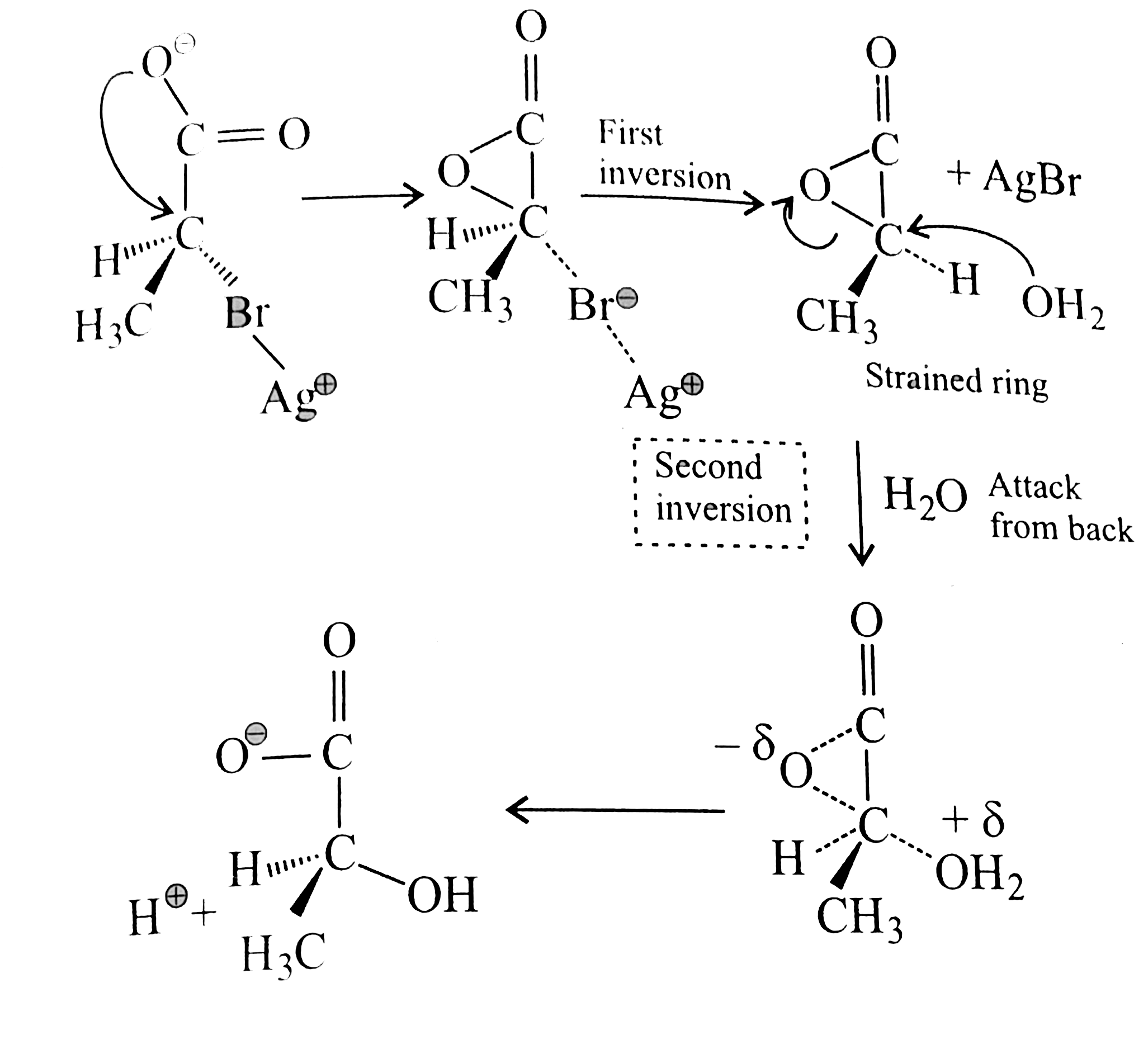
The net result of two steps or two inversions is the retension of the configuration.
Topper's Solved these Questions
- BOOK - CENGAGE CHEMISTRYCHAPTER - AROMATIC COMPOUNDS AND ALKYL AND ARYL HALIDES EXERCISE - Solved Problems37videos
AROMATIC COMPOUNDS AND ALKYL AND ARYL HALIDES
- BOOK - CENGAGE CHEMISTRYCHAPTER - AROMATIC COMPOUNDS AND ALKYL AND ARYL HALIDES EXERCISE - Exercises Subjective Type4videos
AROMATIC COMPOUNDS AND ALKYL AND ARYL HALIDES
- BOOK - CENGAGE CHEMISTRYCHAPTER - AROMATIC COMPOUNDS AND ALKYL AND ARYL HALIDES EXERCISE - Archives Subjective18videos
AROMATIC COMPOUNDS AND ALKYL AND ARYL HALIDES
- BOOK - CENGAGE CHEMISTRYCHAPTER - APPENDIX INORGANIC VOLUME 2EXERCISE - Short Answer Type179videos
APPENDIX INORGANIC VOLUME 2
- BOOK - CENGAGE CHEMISTRYCHAPTER - BIOMOLECULESEXERCISE - Exercises Archives (Analytical And Descriptive)8videos
BIOMOLECULES
Similar Questions
Give the product(s) obtained from the reaction each of the following compounds with Br2/FeCl3.
 View Solution
View SolutionHofmann rearrangement
In the Hofmann rearrangement an unsubstitued amide is treated with sodium hydroxide and bromine to give a primary amine that has one carbon lesser than starting amide.
Gneral reaction:
If the migrating group is chiral then its configuration is retained. Electron releasing effects in the migrating group increase reactivity of Hofmann rearangement.
Arrange the following amides according to their relative reactivity when reacted with Br2 in excess of strong base:
 View Solution
View Solution
Knowledge Check
- Question 1 - Select One
Hofmann rearrangement
In the Hofmann rearrangement an unsubstitued amide is treated with sodium hydroxide and bromine to give a primary amine that has one carbon lesser than starting amide.
Gneral reaction:
If the migrating group is chiral then its configuration is retained. Electron releasing effects in the migrating group increase reactivity of Hofmann rearangement.
Arrange the following amides according to their relative reactivity when reacted with Br2 in excess of strong base:
 AIV>I>II>IIIBII>I>III>IVCII>IV>III>IDII>I>IV>III
AIV>I>II>IIIBII>I>III>IVCII>IV>III>IDII>I>IV>III - Question 2 - Select One
Hofmann rearrangement
In the Hofmann rearrangement an unsubstituted amide is treated with sodium hydroxide and bromide to give a primary amine that has one carbon lesser than starting amide.

In the migrating group is chiral then is configuration is retained. Electron releasing effects in the migrating group increases reactivity of Hofmann rearrangement.
Arrange the following amides according to their relative when reacted with Br2 in excess of strong base :
 AIV>I>II>IIIBII>I>III>IVCII>IV>III>IDII>I>IV>III
AIV>I>II>IIIBII>I>III>IVCII>IV>III>IDII>I>IV>III - Question 3 - Select One
The addition of bromine to cyclopentene provides evidence for bromonium ion immediate in bromine addition. It follows ionic mechanism. When cyclopentene reacts with bromine in presence of Cl4 anti addition occurs and gives trans isomer so addition of halogen to an alkene is a stereospecific reaction. cis alkene on addition with halogen gives racemic mixture and trans álkene on addition may give meso products.
trans-2-butene on reaction with Br2 in CCl4 forms mainlyA±2,3− dibromobutaneB+2,3−dibromobutaneC−2,3−dibromobutaneDMeso 2, 3-dibromobutane
Iodoform gives a precipitate with AgNO3 on heating while CHCl3 does not. ?
Why ?View SolutionAssign reasons for the following :
(i) When a moist blue litmus paper is dipped in a solution of hypochlorous acid, it first turns red and then latter gets decolourised. Explain.
(ii) Iodine is liberated when KI is added to a solution of Cu2+ ions but Cl2 is not liberated when KCI is added to a solution of Cu2+ ions. Why ?
(iii) Na2S2O3 reacts with Cl2andI2 to give different oxidation products. Write the equations of the reactions involved and give a plausible explanation of their contrasting behaviour.
(iv) Name a compound of fluorine which shows +1 oxidation state. How is this compound prepared ? Is this a disproportionation reaction ?View SolutionExplain the following:
a) Why alkenes are more reactive than alkanes?
b) Acetylene reacts with ammoniacal silver nitrate solution or ammoniacal cuprous chlroide solution or sodamide to form an acetylide while ethylene does not.
c) But-2-ene shows geometrical isomerism but but-1-ene does not show.
d) Why has but-1-yne a larger dipole moment (0.80 D) than but-1-ene (0.40D) ?
e) Wjhuy alkylnes are slightly more soluble in water than alkenes and alkanes?
f) Cyclopropane is more reactive than cyclobutane.
g) Cyclopentane is more reactive than cyclobutane.
h) Which isomer of C4H)(9)Br yeilds only a single alkene on dehydrobromination?
i) Write the products of dehydrochlorination of the following:
(j) Which of the following reactions would provide a better synthesis of 2-pentene?
k) Write the major products of dehydration of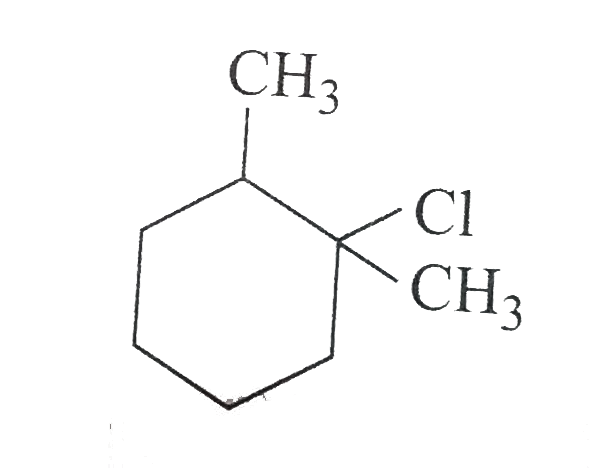
l) Comparison of heat of hydrogenation for the following alkenes:

m) Write the intermolecular step and give the product of the following reactioni:

n) Give the structures of an optically active alkene (A) having the lowest molecular mass, which on catalyst hydrogenation gives an optically inactive compound (B).

 View Solution
View SolutionCarbon dioxide is an essential component of atmosphere. However, when the concentration of CO2 increases in the atmosphere, it can lead to global warming through green house effect. Similarly, rain water is an essential source of water. It has pH of 5.6 due to the formation of H+ ions from the reaction of rain water with CO2 present in the atmosphere. When pH of the rain water falls below 5.6 due to the presence of acids in the atmosphere, it has very damaging effects.
Why does the rain water normally have a pH of about 5.6 ?View SolutionNitrous acid reacts with all classes of amines. The product obtained from these reactions depend on whether primary, secondary or tetriary and ,wheather the amine or aliphatic or aromatic.
Aliphalic primary amines react with acid (NaNO2+HCl) to form alcohol as major product. In , addition to alcohol, alkene and alkyl halides are also formed as minor product.
Certain cyclic primary amines can undergo either ring expansion or ring contraction reactions on treatment with acid. This reaction is called Demajanov ring expansion or contraction.

Which of the following product(s) will be obtained when isopropylamine is treated with sodium nitrite and hydrochloric acid?View Solution

